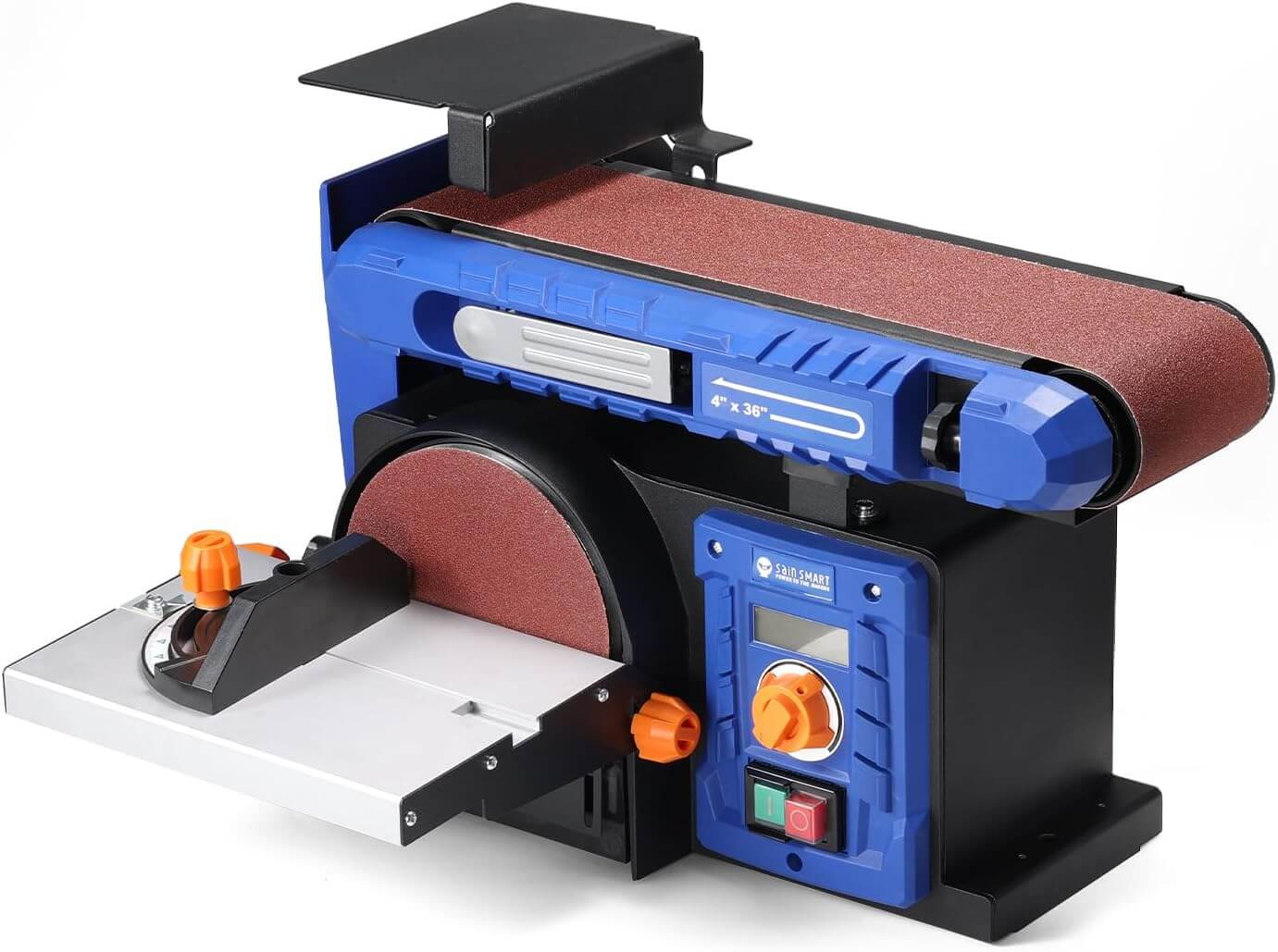Creality CR-30 vs SainSmart INFI-20
What are Belt 3D Printers?

Standard Fused Deposition Modeling extrusion (left) vs. belt 3D printer extrusion (right) (Source: Powerbelt3D)
Unlike traditional 3D Printers that work with a rigid print bed, Belt 3D printers use a belt just like their name implies. Using a belt vs a bed means you can print continuously and mass-produce small parts or print large, very long ones.
Another key difference between the two 3D printer platforms is the angle of the Printer Nozzle. Standard 3D Printers are vertical whereas Belt Nozzles are tilted 45 degrees. The reason for this is because; after each layer of material is extruded the belt moves forward for the next layer. This process allows you to print “Infinitely”.

Belt 3D printing can allow for continuous and potentially "infinite" 3D printing (Source: Powerbelt3D)
Why choose a Belt 3D Printer?
Here are some reasons why a Belt 3D Printer might be perfect for you:
- Continuous batch printing
- Print very long/large objects
- Excels at printing model overhangs without support due to the tilted design, saving filament.
Quick Look
Now that we have provided a basic explanation of the key differences between the 2 print platforms, let's take a look at the differences between a popular brand and the new SainSmart INFI-20 Belt 3D Printer.
Upfront the INFI-20 delivers a $200 savings, comes fully assembled, and provides a few more goodies than the CR-30 like built-in WIFI/Octoprint Support, EZ Belt Adjustment, and Aligners for fewer failed prints.
|
Sales Price |
$1049 (Early Bird $749) |
$1099 (Now $1049) |
|
Assembly |
Fully Assembled |
Requires Assembly |
|
Belt System |
Belt + Aligner System |
Belt |
|
Build volume |
200 * 180 * ∞ mm |
200 * 170 * ∞ mm |
|
Feeder system |
Bowden |
Bowden |
|
Filament Break Sensor |
Y |
Y |
|
Power Outage - Resume print |
Y |
Y |
|
Mainboard |
32 Bit |
32 Bit |
|
Stepper Drivers |
TMC2208 |
TMC2208 |
|
Additional Features
|
WIFI Control |
Extension Rollers |
|
Integrated OctoPrint |
||
|
Web control machine |
||
|
Extension Rollers |
Unboxing
Both printers are approximately the same size. The Sainsmart INFI-20 is slightly taller than the Creality CR-30 by about 10mm.

Expect to be printing the test file within 5 minutes of unboxing, powering up, and loading your filament.
No Joke! The INFI-20 only requires you to plug everything in. This includes the stepper motors and LCD Control Head Unit.

In comparison, the Creality CR-30 requires some assembly. The printer will arrive with the XY Axis laying on top of the Z-Axis “Printmill” base. After unpacking the machine and making sure we had all the parts and accessories, assembly took us about 25 minutes.
The First Print - Bed Leveling
Before we got to printing we had to double-check each of the printer's belts and make sure the “bed” was level after shipping.
A level bed is critical in 3D Printing and even more so with a belt printer. Here are some key differences between the 2 Belt Printers and the leveling process.
The process was pretty straightforward. Included with the printer is a layer test feature that you can select in menu, print and then begin the process of bed leveling based on the output of the print which is a line printed in a zigzag pattern helping you evaluate the bed level and alignment of the belt.

I was able to use the 4 Bed Level Adjustment nuts to fine-tune the bed and start on my first benchmark print in no time. If your machine shows up with a bed that's a little out of whack there is an adjustable bracket that allows you to manually loosen and adjust the height of the sensor.

CR-30
Just like the INFI-20, the process is also pretty straightforward. However there are definitely some key differences, for example; To start, you home the machine and then you can see the distance between the nozzle and the belt. You then adjust the Z-height sensor bracket to fine-tune your nozzle height. It's not very difficult, but that is your only option for adjusting your belt. So if you do encounter any issues that are not resolved by adjusting the sensor height, you might run into issues with getting good quality prints or excessive failures.

Print Quality
During testing we found the print quality to be similar on both machines. For continuity, we used the same slicer we use with the INFI-20, a custom version of IdeaMaker. It's just easier to use, the Cura build provided with the CR-30 has been inconsistent and a bit of a headache. The biggest difference came down to the ease of use as we could easily fine-tune the bed and make adjustments when switching between materials like TPU or PETG for example.
We did tend to experience more print anomalies with the CR-30 over time, with one of the most common problems being a belt “shift” that would cause visible artifacts on the printed object.

Overview
For the ability to produce infinite print batches to save time and fulfill large orders or help expedite your project workflows, both machines are up to the task.
The INFI-20 delivers more value for the dollar overall with easier maintenance, quality of life features such as WIFI printing, control, and integrated OCTOPrint support, and the slightly taller Z-Height.







